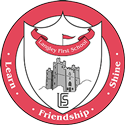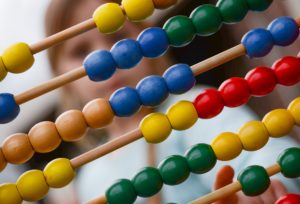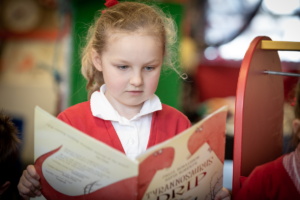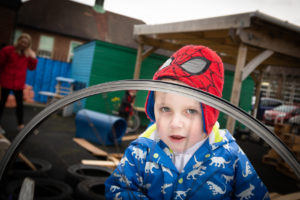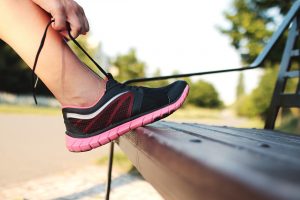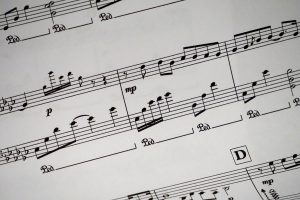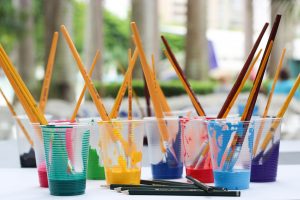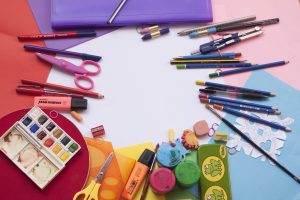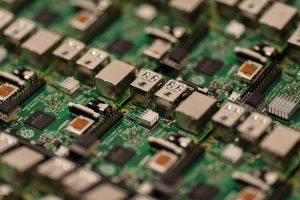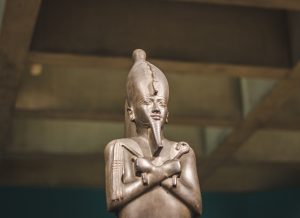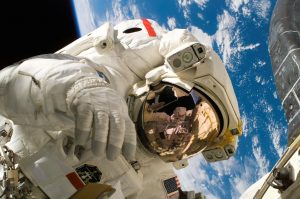Science
Purpose of study
A high-quality science education provides the foundations for understanding the world through the specific disciplines of biology, chemistry and physics. Science has changed our lives and is vital to the world’s future prosperity, and all pupils should be taught essential aspects of the knowledge, methods, processes and uses of science. Through building up a body of key foundational knowledge and concepts, pupils should be encouraged to recognise the power of rational explanation and develop a sense of excitement and curiosity about natural phenomena. They should be encouraged to understand how science can be used to explain what is occurring, predict how things will behave, and analyse causes.
Aims
- develop scientific knowledge and conceptual understanding through the specific disciplines of biology, chemistry and physics
- develop understanding of the nature, processes and methods of science through different types of science enquiries that help them to answer scientific questions about the world around them
- are equipped with the scientific knowledge required to understand the uses and implications of science, today and for the future.
Prior learning | Prior learning | Year 1 | Year 2 | Year 3 | Year 4 |
|---|---|---|---|---|---|
Ask questions such as “what”, “where” and | Can use words like “first”, “next” and “then” | KPI: To ask simple questions and recognise that they can be answered in different ways. | KPI: To ask relevant questions and begin to suggest independently how they could be answered. | KPI: To ask relevant questions and use different types of scientific enquiries to answer them. |
|
Talk about things observed when playing outside. e.g. When splashing in | Talk about how things, like flowers or Talk about the patterns in things e.g. like bricks or leaves. | KPI: To observe carefully, using simple equipment. | KPI: To set up simple practical enquiries, comparative and fair tests. | KPI: To explain why they need to collect information to answer a scientific question. | KPI: To make systematic and careful observations and, where appropriate, take accurate measurements using standard units, using a range of equipment, including thermometers and data loggers. |
Ask questions about the animals and trees I see. | Talk about how things change, like the | KPI: To identify and classify a number of plants and animals. | KPI: To gather, record, classify and present data in a variety of ways to help in answering questions. | KPI: To make accurate measurements using standard units. | KPI: To gather, record, classify and present data with increasing independence in a variety of ways to help answer questions. |
Talk about plants and animals of interest. | Know about similarities | KPI: To use observations and ideas to suggest answers to own questions. | KPI: To report findings using simple scientific language, drawings, labelled diagrams, bar charts and tables. | KPI: To explain what they have found out and use own measurements to say whether it helps to answer questions. | KPI: To record findings using simple scientific language, drawings, labelled diagrams, keys, bar charts, and tables. |
Talk about why things happen and | Talk about | KPI: To gather and record data to help in answering questions. | KPI: To use results to draw simple conclusions and suggest improvements, new questions and predictions for setting up further tests. | TT: To describe how nutrients, water and oxygen are transported within animals and humans. | KPI: To report on findings from enquiries, including oral and written explanations, displays or presentations of results and conclusions. |
Beginning to notice changes
| Make observations | TT: To identify and name a variety of common, wild and green plants. | TT: To observe and describe how seeds and bulbs grow into mature plants. | TT: To describe and explain the skeletal and muscular system of a human. | KPI: To use results to draw simple conclusions, make predictions for new values, suggest improvements and raise further questions. |
Understand the need to be careful | Know the properties of some | TT: To identify and name a variety of deciduous and evergreen trees. | TT: To find out and describe how plants need water, light and suitable temperature to grow and stay healthy. | TT: To explain how the need and functions of plant parts vary from plant to plant e.g insect and wind pollinated plants. | KPI: To identify differences, similarities or changes related to simple scientific ideas and processes. |
| Familiar with basic scientific concepts such as floating, sinking, experimentation. | TT: To identify and describe the basic structure of a variety of common flowering plants, including trees. | TT: To notice that animals, including humans, have offspring, which grow into adults. | TT: To suggest materials which could be used for better jobs. | KPI: To use straightforward scientific evidence to answer questions or to support own findings. |
|
| TT: To identify and name a variety of common animals, including fish, amphibians, reptiles, birds and mammals. | TT: To find out about and describe the basic needs of animals, including humans for survival (water, food and air). | TT: To set up a simple test to explore the differences between materials. | TT:To recognise that living things can be grouped in a variety of ways. |
|
| TT: To identify and name a variety of common animals that are carnivores, herbivores and omnivores. | TT: To describe the importance for humans of exercise, eating the right amount of different types of food, and hygiene. | TT: To describe what it means to reverse a change and describe which changes can and cannot be reversed. | TT: To explore and use classification keys to help group, identify and name a variety of living things in local and wider environment. |
|
| TT: To describe and compare the structure of a variety of common animals (fish, amphibians, reptiles, birds and mammals, including pets). | TT: To identify and compare the suitability of a variety of everyday materials, including wood, metal, plastic, glass, rock, brick, paper and cardboard for particular uses. | TT: To describe and explain the difference between sedimentary and igneous rocks, and To describe how fossils are formed within sedimentary rocks. | TT: To recognise that environments can change and that this can sometimes pose dangers to living things. |
|
| TT: To identify, name, draw and label the basic parts of the human body and say which part of the human body is associated with each sense. | TT: To find out how the shapes of solid objects made from some materials can be changed by squashing, bending, twisting and stretching. | TT:To talk about how some magnets attract or repel each other. | TT: To describe the simple functions of the basic parts of the digestive system in humans. |
|
| TT: To distinguish between an object and the materials from which it is made. | TT: To explore and compare differences between things that are living, dead and things that have never been alive. | TT: To explain the difference between transparent, translucent and opaque. | TT: To identify the different types of teeth in humans and their simple functions. |
|
| TT: To identify and name a variety of everyday materials, including wood, plastic, glass, metal, water and rock. | TT: To identify that most living things live in habitats to which they are suited and describe how different habitats provide for the basic needs of different kinds of animals and plants, and how they depend of each other. | TT: To explain how bulbs work in an electrical circuit. | TT: To construct and interpret a variety of food chains, identifying producers, predators and prey. |
|
| To describe the simple physical properties of a variety of everyday materials. | TT: To identify and name a variety of plants and animals in their habitats, including micro-habitats. | To suggest improvements and predictions for further test. | TT:To compare and group materials together, according to whether they are solids, liquids or gases. |
|
| TT: To compare and group together a variety of everyday materials on the basis of their simple physical properties. | TT: To describe how animals obtain their food from plants and other animals, using the idea of a simple food chain, and identify and name different sources of food. | TT: To explain how the muscular and skeletal systems work together to create movement. | TT: To observe that some materials change state when they are heated or cooled, and measure or research the temperature at which this happens in degrees Celsius (°C). |
|
| TT: To observe changes across the four seasons. |
| TT: To explain different ways that they can sort the same group of materials and explain reasoning. | TT: To identify the part played by evaporation and condensation in the water cycle and associate the rate of evaporation with temperature. |
|
| TT: To observe and describe weather associated with the seasons and how day length varies. |
| TT: To explain why shadows change when the light source is moved closer or further from the object. | TT: To identify how sounds are made, associating some of them with something vibrating. |
|
|
|
|
| TT: To recognise that vibrations from sounds travel through a medium to the ear. |
|
|
|
|
| TT: To find patterns between the pitch of a sound and features of the object that produced it. |
|
|
|
|
| TT: To find patterns between the volume of a sound and the strength of the vibrations that produced it. |
|
|
|
|
| TT: To recognise that sounds get fainter as the distance from the sound source increases. |
|
|
|
|
| TT: To identify common appliances that run on electricity. |
|
|
|
|
| TT: To construct a simple series electrical circuit, identifying and naming its basic parts, including cells, wires, bulbs, switches and buzzers. |
|
|
|
|
| TT: To identify whether or not a lamp will light in a simple series circuit, based on whether or not the lamp is part of a complete loop with a battery. |
|
|
|
|
| TT: To recognise that a switch opens and closes a circuit and associate this with whether or not a lamp lights in a simple series circuit. |
|
|
|
|
| TT: To recognise some common conductors and insulators, and associate metals with being good conductors. |
Spiritual
Science supports spiritual development by providing many opportunities for children to think and spend time reflecting on the amazing wonders which occur in our natural world.
Moral
Science supports moral development by showing children that different opinions need to be respected and valued. There are many moral and ethical issues that we cover in science including discussions about environmental and human issues.
Social
Science supports social development by exposing children to the power of collaborative working in the science community which has led to some amazing and life changing breakthroughs in medicine. When undertaking experiments and research children work collaboratively.
Cultural
Science supports cultural development by looking at how scientists from a range of cultures have had a significant impact globally. It also helps children to understand how important science is to the economy and culture of the UK.
